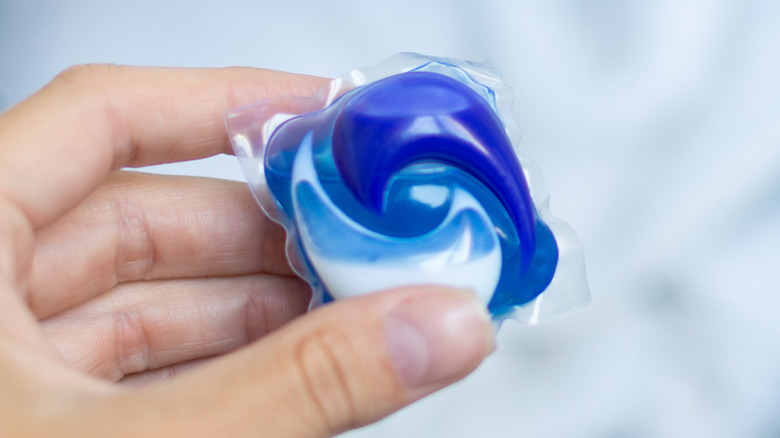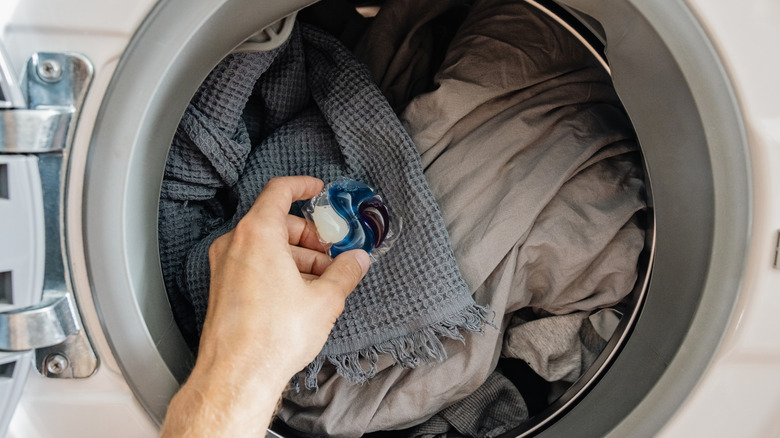Don't Believe This Common Plumbing Myth. Here's The Truth About Detergent Pod Clogs
Back in the 1960s, Procter & Gamble launched the first laundry detergent pods, called Salvo tablets. These were compacted detergent powders that had early success, but problems with how it dissolved while in use led to its discontinuation. By 2012, the company released a similar product under the Tide brand, this time in liquid form, encased in water-soluble capsules called Tide Pods. The new detergent pods achieved substantial market success and continue to be popular today. With its widespread use, the myth of pods clogging drains has grown.
To better understand why this myth is incorrect, it is crucial to understand the two main parts of a detergent pods, which are the casing and the cleaning agents inside. The cleaning agents are composed of surfactants and other components similar to those found in liquid detergents, such as linear alkylbenzene sulfonates, while the capsules they are enclosed in are made from polyvinyl alcohol or a similar derivative. What is important to note is that both alkylbenzene sulfonates and polyvinyl alcohol are water soluble, and are also both biodegradable.
While there have been reported issues associated with laundry pods, clogging of pipes is unlikely to be one. The design and formulation of detergent pods for laundry and dishwashers are made to dissolve entirely in water. Detergent pods do not leave solid residue, and the surfactants in the pods can prevent clogs produced by oil and grease by breaking them down, making it easier to be sluiced down the pipes.
Proper use for best results
To avoid potential issues, it is essential to follow the manufacturer's recommended usage and avoid the common mistakes when using laundry pods. Always use the correct water temperature and set the machine to full wash cycles because the capsule may not dissolve completely at lower temperatures or if the wash cycle is too short. The pods must not be used in a dispenser it is not designed for, as it can also cause problems later on. And avoid overloading, as this prevents the pods from dissolving properly because there is not enough space or water in the machine.
To achieve the best results, place the pod in the empty drum of the washing machine before adding clothes, and depending on the load, add additional pods if required. If the clothes need to be washed at a lower temperature, where the pod might not fully diffuse, it can first be dissolved in a cup of hot water. For dishwashers, the detergent pod should be placed in the dispenser instead of the dishwasher tub's bottom.
Detergent pods provide several advantages compared to liquid detergent, such as convenience and ease of use. Pods are compact and already pre-measured, are lightweight, easy to carry, and are not messy to use due to their small and sealed packaging. However, if pods do not fit the individual needs or preferences, a great alternative is the laundry egg, which is more environmentally friendly option because it is reusable and recyclable.

